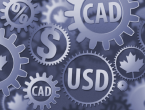EUR/USD
1.17092
-0.103%
Gold
4339.50
0.156%
Oil
56.513
1.153%
USD/JPY
157.685
1.371%
GBP/USD
1.33734
-0.060%
GBP/JPY
210.883
1.325%
On December 20th, an official from the National Development and Reform Commission answered reporters questions regarding the "Rules on Pricing Behavior of Internet Platforms," outlining the next steps for ensuring its implementation: First, conduct policy dissemination. Focusing on regulating price competition in the platform economy and protecting the legitimate rights and interests of consumers and platform operators, conduct in-depth policy dissemination to remind operators to operate legally and compliantly. Second, promote industry self-regulation. Give full play to the role of industry associations and chambers of commerce, encouraging relevant operators to take the lead in complying with regulatory requirements and consciously regulate their pricing behavior. Third, strengthen monitoring and evaluation. Closely monitor price competition in the platform economy, track and evaluate the implementation of the "Rules on Pricing Behavior," and promptly identify any problems. Fourth, strengthen regulatory enforcement. Implement the regulatory measures proposed in the "Rules on Pricing Behavior," investigate and punish price violations according to law, and maintain a fair and competitive market environment.On December 20th, the "Rules on Pricing Behavior of Internet Platforms" were issued. The rules stipulate that platform operators and operators within the platform shall indicate the promotional price or price promotion rules in a manner that is easy for consumers to understand, and comply with the following provisions: (1) Publicly display the promotional rules, activity period, scope of application, etc. in a prominent position on the page; (2) Accurately indicate the discount or price reduction basis; (3) If the price is offset by points, gift certificates, vouchers, coupons, prepayments, etc., the specific calculation method shall be clearly indicated.On December 20th, the "Rules on Price Behavior of Internet Platforms" were issued. The rules stipulate that platform operators and operators within the platform shall not violate Article 14, Paragraph 3 of the "Price Law of the Peoples Republic of China" by using the following means to fabricate and disseminate information about price increases, drive up prices, and promote excessive price increases of commodities: (1) fabricating and disseminating information about supply shortages or a surge in market demand; (2) fabricating and disseminating information about other operators having already raised or preparing to raise prices; (3) disseminating information containing deceptive or misleading language to inflate price expectations; (4) failing to sell commodities to external parties in a timely manner without justifiable reasons, exceeding the normal storage quantity or storage period, hoarding large quantities of commodities with tight market supply or abnormal price fluctuations, and continuing to hoard after being warned; (5) forcing customers to purchase additional goods, thereby indirectly and significantly increasing commodity prices; (6) using other means to drive up prices and promote excessively rapid and excessive price increases of commodities.On December 20th, the "Rules on Pricing Behavior of Internet Platforms" were issued. The rules stipulate that platform operators and operators within the platform shall not violate Article 14, Paragraph 1 of the "Price Law of the Peoples Republic of China" by colluding with each other to manipulate market prices and harm the legitimate rights and interests of other operators and consumers by using platform rules, data, and algorithms.On December 20th, the "Rules on Pricing Behavior of Internet Platforms" were issued. The rules stipulate that platform operators must conduct subsidy promotions fairly and impartially, and must not falsely or exaggeratedly advertise subsidy amounts or力度 (intensity/scale). When conducting subsidy promotions, platform operators must prominently display the subsidy and related promotional activity rules on the corresponding activity page of their website or application, clearly specifying information such as the subsidy recipients, subsidy methods, participation conditions, and start and end times.











